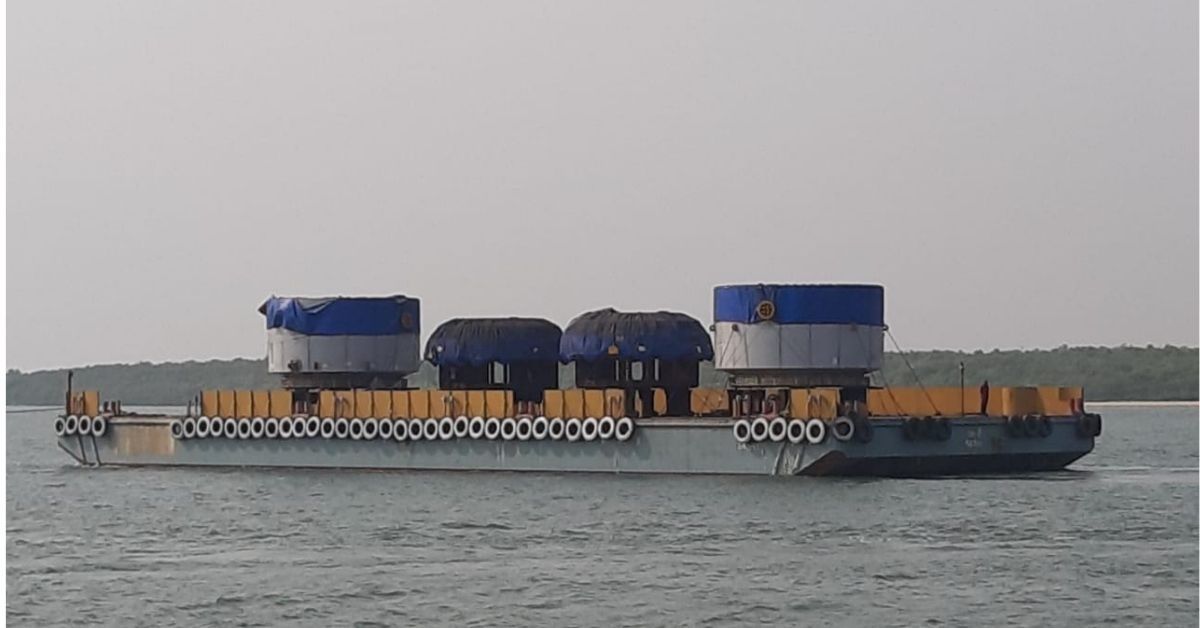Tata Steel recently used inland waterways to transport heavy gear for its Kalinganagar plant expansion project in Odisha, demonstrating how inland waterways may be a long-term logistical solution. The company’s Engineering & Project (E&P) Division employed multimodal logistics, including inland waterways, to transport approximately 1,000 cubic metres of four super over dimensional assembled cargoes (SODCs), each weighing up to 100 metric tonnes and measuring eight metres in diameter.
The consignment sailed in a chartered vessel from Shanghai to Paradip Port in Odisha; subsequently loaded on a barge that travelled up Luna River and finally unloaded at Marsaghai, in Kendrapara district. Thereafter, the consignment was transported via road to the project site.
Earlier this year, Tata Steel had undertaken its maiden multi-modal shipment of TMT bars from Haldia Port in West Bengal to Pandu Port in Assam using the Indo-Bangladesh Protocol (IBP) route via Brahmaputra river, becoming the first steel company in India to do so. It was a landmark effort to decarbonise the steel sector and the country.
This shipment of 1,793 MT of steel rods from Tata Steel in Jamshedpur that arrived at Haldia on rail before being loaded on to river barges marks the beginning of the use of multimodal logistics, a landmark effort to decarbonise the steel sector and the country.
The barge used the Indo-Bangla Protocol route number 1 and 2 and entered the Brahmaputra river via Chilmari, in Bangladesh and ended its voyage at Dhubri in Assam covering 1,535 kilometres.
Significance
The waterway route will also open a new mode of transportation for super ODC project cargo to overcome future challenges and uncertainties involved in road restrictions. This will also enable the import of bigger sized assembled equipment directly to the site, reducing fabrication, assembly, supervision jobs, etc, at the site.
The use of Inland waterways also eliminates the logistics challenge of bypassing en route infrastructure constraints across the roadways. On the initiative, Avneesh Gupta, Vice President (TQM and Engineering & Projects), Tata Steel, said: “This will pave the way for a sustainable logistics model with a potential cost advantage, which will be achieved through consolidation and import of plant and machinery in an assembled condition. This will also contribute towards decarbonization of the steel sector and the country while also improving road safety due to minimized road movement.”







